Technology
UnitedHealth data breach leaked info on over 100 million people

On February 12, criminals used compromised credentials to remotely access a Change Healthcare Citrix portal, an application used to enable remote access to desktops. The portal did not have multi-factor authentication. Once the threat actor gained access, they moved laterally within the systems in more sophisticated ways and exfiltrated data. Ransomware was deployed nine days later.
Technology
Why Elon Musk’s SpaceX Crew Dragon was chosen to handle the return of Sunita Williams from ISS- The Week

Eighty days since they took off from Cape Canaveral Space Force Station in Florida onboard Boeing’s Starliner mission, astronauts Suni Williams and Butch Wilmore will have to remain on the International Space Station (ISS) till February 2025. Their return journey to Earth ran into trouble because of issues plaguing the Boeing Starliner spacecraft.
With the Starliner suffering setbacks with helium leaks and thrusters, NASA on Saturday deemed it was too risky to bring the two astronauts back in the capsule. Instead, the space agency decided to turn to Elon Musk’s SpaceX’s workhorse Crew Dragon spacecraft.
NASA administrator Bill Nelson said NASA considered its extensive experience with spaceflight — both successful and unsuccessful — when they decided to opt for SpaceX. The agency also held a poll of its representatives from across its departments and oversight and development centres. He added that NASA lost two space shuttles “as a result of there not being a culture in which information could come forward.”
“Spaceflight is risky, even at its safest and even at its most routine. And a test flight, by nature, is neither safe, nor routine,” he said.
The starliner will fly home empty in early September.
SpaceX, which has been conducting astronauts to the ISS since 2020, has a routine mission scheduled in September, called Crew-9. This will now have to be reconfigured to carry Williams and Wilmore. It will have to scrap the initial plan to send a four-person crew and leave two seats for the duo. New Dragon spacesuits for the astronauts, along with other necessary supplies, will be brought to the station in the coming months. SpaceX will work with NASA to decide which astronauts will not fly to the ISS on Crew-9.
It was during 2020 that SpaceX’s Crew Dragon completed its first crewed test flight, thereby earning certification from NASA. The successful flights of SpaceX’s workhorse.
Over the last four years, it has carried a dozen crews to and from the ISS.
SpaceX president and chief operating officer Gwynne Shotwell has shared that her company is ready to work with NASA to bring back astronauts Butch Wilmore and Suni Williams on the Crew Dragon spacecraft.
Technology
Best student laptop deals: Laptops for college from $200

If you’re going to university or school, then you’ll probably want to aim for some solid budget laptops that are also pretty portable. Luckily, there are a lot of great options out there, and while you could absolutely aim for some of the best laptops on the market, you’re better off going for something that fits your needs and your budget. For example, there are a lot of great Chromebook deals you can take advantage of that are a lot cheaper than Windows laptops, although if you do need Windows, then there are a lot of great laptop deals for that, too.
Whatever you’re looking for, we’ve collected some of our favorite student laptop deals from that include HP laptop deals, Dell laptop deals, Acer laptop deals, and Lenovo laptop deals.
HP Laptop 14 — $200 $250 20% off

The HP Laptop 14 is a popular choice among students because of its entry level price point. It’s specs aren’t going to blow anyone away, but they’re good value for the price and are plenty to get the job done. This build of the HP Laptop 14 has 4GB of RAM and a quad-core Intel Celeron processor. It does check in with just 128GB of storage space — this may not be enough for some users, but if you aren’t planning on loading your laptop up with media this is one that will accompany you well around campus.
ASUS Vivobook 14-inch — $280 $430 35% off
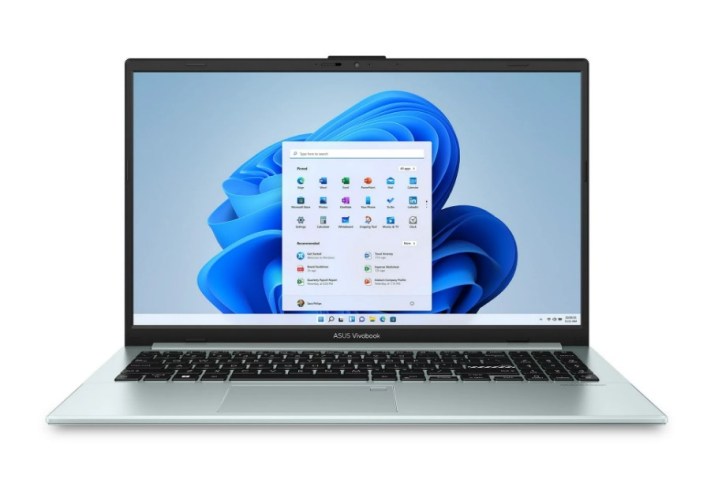
The ASUS Vivobook 14-inch is a great study companion due to quirks that make it perfect for late-night usage. Like other ASUS laptops (just one reason ASUS is featured among the best budget laptops) it sports a quiet keyboard with slender-pressing keys. And, in this case, they’re also backlit, meaning you can find the right keys easily even in the dark of night. Its 180-degree hinge, when fully opened, means the ASUS Vivobook can lie flat, allowing for multiple comfortable positions for in-bed studying. The ASUS Vivobook 16-inch features 8GB of RAM, 126GB of SSD storage, and an Intel Core i3-1215U processor.
IdeaPad Slim 3i Chromebook — $420 $550 23% off
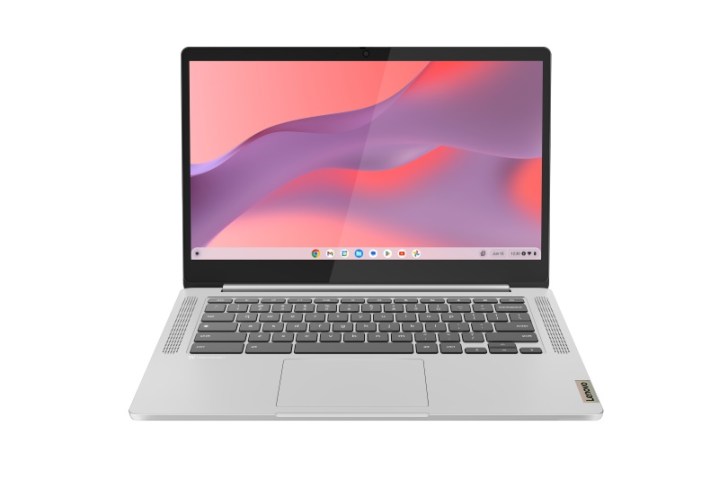
Fitting in as one of the best Chromebooks for students, the IdeaPad Slim 3 Chromebook runs on 8GB of memory and an Intel i3 processor. The 14-inch FHD screen has a 100% sRGB color gamut and sides of the keyboard contain speakers, making it a serviceable video lecture companion. The IdeaPad Slim 3’s WiFi 6 allows for quick downloads and a solid internet connection. This, combined with the laptop’s 13-hour battery life, solidify it as the perfect laptop to throw in your bag and take notes with at class. You can still watch (purely educational, of course) YouTube videos, but the machine isn’t designed to be overly distracting.
IdeaPad Slim 3 — $430 $750 39% off

When we look at 15 inch laptops we shouldn’t ignore the IdeaPad Slim 3, which comes with an AMD Ryzen 5 7530U processor and Integrated AMD Radeon Graphics. Behind its 1080p, anti-glare screen is the 8GB of memory and a 512GB SSD storage drive. What makes the IdeaPad Slim 3 special is its tough exterior, made for withstanding harsh drops. This, along with its slim build, make it perfect to throw in the backpack and tug along with you wherever you go. Take even 15 minutes between classes for a charge session and you’ll get two full hours of usage out of your IdeaPad Slim 3, it is a truly versatile machine that is ready to go when you are.
HP Pavilion x360 Laptop 14t — $450 $709 36% off
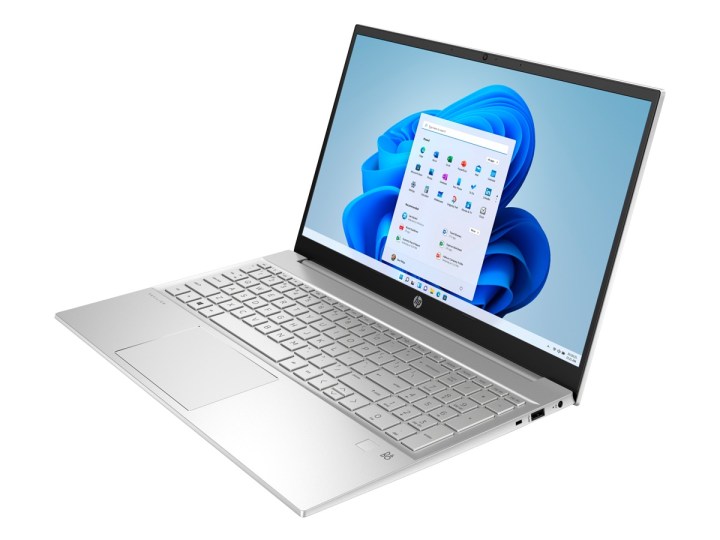
If you’re willing to spend a little bit more, the HP Pavilion Laptop 15t really starts to ramp up the stats. The 8GB of RAM can be especially useful if you need to use advanced creative software, for example, and competes with the very best business laptops. Of course, the Intel Core i3-1315U processor won’t hurt either. Store you projects and PowerPoints locally on the 128GB SSD contained within, as you don’t want poor reception in the depths of the philosophy building keeping you from getting your points across. Overall, this is one of the best student laptop deals for those that need a little extra power but aren’t ready to break the bank on luxuries like an ultra-advanced display (the HP Pavilion Laptop 14t is 1080p).
ThinkPad E16 Gen 2 — $799 $1,331 40% off

When we think of the best Lenovo laptops, one line always comes to mind: ThinkPad. They have a reputation for high durability and good keyboards. While we’ve warned in the past that the latest laptop model isn’t always the best, there is something to be said about the ThinkPad E16 Gen 1 being a new arrival to the Lenovo store. It’s got the latest features that you’ll want for the long term, in abundance. For example its got both USB-C ports and WiFi 6, which are becoming increasingly useful. Furthermore, the ThinkPad E16 has a 16-inch 1920 x 1200p screen, 1 TB of storage, and a whopping 24 GB memory.
Dell XPS 14 — $1,010 $1,560 35% off

Consistently one of the best laptops around, the Dell XPS 14 is a dream in almost every way. The thinnest and lightest 14-inch XPS laptop yet, it’s powerful too. It has a Ultra 7 Processor 155H processor, 16GB of memory, and 512GB of SSD storage. Its 14.5-inch full HD+ display with a 1920 x 1200 resolution is a delight to look at with 500 nits of brightness ensuring it can handle all lighting situations too. An impressive battery life of up to 12 hours means it’ll handle the busiest days of classes while you can enjoy streaming your favorite shows in style later in the day thanks to the great display and bigger internal speakers than previous models.
HP Envy Laptop 17t — $1,250 $1,500 16% off

Featured among our best HP laptop deals as well, the HP ENVY Laptop 17t is praised for its photo connectivity features. By using HP Palette, you can search through the images of your college memories with photo recognition software. (Yes, the guy you went to chemistry with was also the awful karaoke singer last night.) The HP ENVY Laptop 17t also has quick file sharing between connected devices. Another thing to note about this laptop is how bit it is. It has a 17.3-inch, 1080p screen, so be sure to check out our favorite 17-inch laptop bags if you pick up this offering, as your current one might not be able to handle it. And that big size won’t go to waste at all, as it will not only help you see your pictures better, but also see yourself better from its 5MP built-in webcam. The HP ENVY Laptop 17t uses an Intel Core i7 processor, gets 16GB of RAM, and 512GB of storage.
Technology
Razer’s Xbox quick charge stand drops to $20

Right now Amazon has an incredible deal on the Razer Universal Quick Charge stand for Xbox controllers that saves you quite a bit of money on the accessory. This charging stand will fit one controller and it normally retails for $40 to $50 depending on the style you pick. For instance, some styles like the Electric Volt are $40 at full price while the Forza Horizon 5 model is $50 at full price.
However, Amazon is knocking the price down on many of the available options to $20. So depending on the color or style you choose, you’re saving either 50% or 60%. This is easily the lowest price we’ve tracked for this accessory at any point and if you need an easy way to keep your wireless controller charged, this is a deal you don’t want to miss.

Now it is probably obvious but it needs to be said for clarification, this deal is only for Razer’s quick charge stand and it does not come with an Xbox wireless controller. The stand does come with the necessary USB cable to plug it into a power source though. You can sit your controller on the stand at any point and charge your wireless controller and it should be charged up in under a few hours.
The stand also serves as a nice place to store the controller when you’re not playing, which also looks nice. So it keeps things organized in your setup. In terms of the available colors/styles for this deal, Amazon is offering the $20 price on the Deep Pink, Electric Volt, Forza Horizon 5, Mineral Camo, Robot White, and Velocity Green variants.
Technology
Informatica launches blueprints for developing generative AI

Informatica launched Generative AI Blueprints, a set of guidelines and features designed to speed and simplify developing generative AI tools on six prominent cloud-based data management platforms.
The blueprints, available at no cost in Informatica’s Architecture and were released on Oct. 24, enable customers to use the vendor’s Intelligence Data Management Cloud (IDMC) platform in concert with AWS, Databricks, Google Cloud, Microsoft Azure, Oracle Cloud Infrastructure and Snowflake to develop generative AI capabilities.
Key features of the blueprints include vector database and language model connectors, prebuilt no-code data integration recipes, data quality and master data management capabilities and standard reference architectures to guide developers as they build new tools.
Given that enterprise interest in developing generative AI models and applications has exploded over the past two years yet the actual building of such tools is complicated, Informatica’s launch of Generative AI Blueprints will be useful for the vendor’s customers, according to Kevin Petrie, an analyst at BARC U.S.
“Data and AI teams struggle to integrate the many elements of a GenAI architecture, from data sources to pipelines to [retrieval-augmented generation] workflows and the applications that contain language models,” he said. “The more you can simplify this architecture, the better you can reduce risk to determine the value of pilots and limited production deployments.”
Beyond being assistive to customers, the launch of Generative AI Blueprints also represents Informatica capitalizing on an opportunity, Petrie continued.
BARC’s research shows that more than 80% of enterprises are likely or extremely likely to work with vendors when developing AI initiatives. In addition, more than half are likely or extremely likely to engage a global consulting firm.
“As incumbent providers in many environments, Informatica and its consulting partners recognize this opportunity and aim to capitalize on it,” Petrie said.
Based in Redwood City, Calif., Informatica is a data management vendor whose IDMC is designed to enable its users to integrate and prepare data for analysis and AI development.
Earlier this month, the vendor’s most recent platform update featured capabilities aimed at enabling customers to prepare their data for developing AI models and applications. Generative AI Blueprints builds on that by providing users with the next steps to take that data and use it to build models and applications.
Generative AI is being termed a transformative technology, akin to the smartphone 15 years ago, the internet in the 1990s, the personal computer in the 1980s and the telephone a century ago. Generative AI has existed for years, but OpenAI’s November 2022 launch of ChatGPT was a significant advancement in its capabilities and ease of use that led to surging interest. Two of its primary benefits are true natural language processing that enables non-technical workers to use complex tools that previously required coding knowledge and other extensive training as well as making technical experts more efficient by automating time-consuming repetitive tasks.
As a result, many enterprises are developing — or at least preparing to develop — generative AI tools.
At their core is data, which is needed to train models and applications to understand an enterprise’s operations. In response, many data management and analytics vendors including Informatica are developing generative AI-powered tools such as conversational assistants to help customers use their platform. In addition, they are creating ecosystems for those customers to develop their own generative AI capabilities trained on their proprietary data.
For example, data platform vendors Databricks and Snowflake each are building up environments for their users to develop generative AI capabilities as are tech giants AWS, Google, Microsoft and Oracle. However, developing generative AI — as well as traditional AI and machine learning — models and applications is difficult. It requires significant data preparation to ensure the quality of the data used to train generative AI tools, integrations with language models that provide the generative AI itself and the creation of complex pipelines that ultimately feed models and applications the data that trains them.
It’s estimated that over 80% of all AI projects never make it into production. And in July, research and advisory firm Gartner predicted that 30% of generative AI projects will be abandoned as soon as the end of 2025.
Informatica’s Generative AI Blueprints are designed to assist enterprise customers by simplifying the complex development process, providing them with not only needed tools but also expert advice.
Rik Tamm-Daniels, Informatica’s global vice president of strategic ecosystems and technology, noted that as enterprises attempt to develop generative AI tools, even knowing where to start can be a challenge. Generative AI Blueprints lay out the steps for them. “[Two-thirds] of tech leaders expect their organization to invest more in AI over the next three years, so finding an efficient and effective implementation process is crucial,” he said. “Successfully implementing AI requires a robust framework to ensure that an enterprise’s data is ready.”
A mix of customer feedback and internal conversations among product teams led to the development of the blueprints, Tamm-Daniels continued.
“We realized that we could support the deployment and scaling of enterprise-grade GenAI applications by creating an easy-to-follow template that provides organization-specific end-to-end solutions,” he said.
Organizations, meanwhile, are seeking support as they attempt to build generative AI tools, according to Stephen Catanzano, an analyst at TechTarget’s Enterprise Strategy Group. Some are having early success. Many others, however, have plans to build generative AI tools but aren’t yet able. As a result, Informatica’s Generative AI Blueprints address a real need.
“Organizations are looking for leadership from their technology partners on how to leverage their enterprise data to build contextual generative AI application leveraging their preferred cloud partners,” Catanzano said. “These blueprints are what organizations need to navigate this complex and ever-changing AI landscape.”
Specific features included in Informatica’s Generative AI Blueprints include the following:
Combined, the features comprising Informatica’s Generative AI Blueprints are thorough, according to Catanzano.
“They look very comprehensive,” he said, noting that the different capabilities address everything from identifying a use case for AI through cultivating trusted data and vectorizing the data to make it discoverable by AI-powered automation tools, to choosing an LLM with which to use data and building the retrieval-augmented generation pipeline that feeds the model or application. “It shows how important an ecosystem is for Informatica and their partners to work together,” Catanzano said. “It’s very comprehensive when you leverage all of the partners in their Blueprints.”
Petrie similarly noted that Informatica’s Generative AI Blueprints effectively address data preparation and pipeline development.
“These blueprints can help enterprises prepare, validate and deliver data for AI, especially structured tables that often contain enterprises’ most trustworthy data,” he said.
Informatica’s recent platform update focused on preparing data for AI development and the launch of Generative AI Blueprints continue more than of year making AI a focal point of product development. That will continue, according to Tamm-Daniels. Like many analytics and data management vendors, Informatica understood the potential of generative AI and the ways it could use the technology to develop tools to help its customers. In addition, it understood that enterprises would want to develop their own generative AI capabilities and unveiled features aimed at assisting them in that pursuit.
For example, in May 2023, Informatica unveiled plans to infuse Claire, its AI engine, with generative AI. Similarly, competitors including Alteryx and Fivetran have made AI part of their product development.
“We will continue to focus on strengthening and enhancing our GenAI roadmap and solutions as more and more enterprises look to Informatica to solve their data management problems,” Tamm-Daniels said.
One way Informatica could strengthen its Generative AI Blueprints would be to add connectors to graph databases in addition to the connectors to vector databases that are already included, according to Petrie. Just as vector search and storage can aid generative AI development by enabling developers to discover relevant data, graph technology can similarly help the data discovery process.
“I see much less focus on graph elements in these architectures,” Petrie said. “Knowledge graphs matter because they … help GenAI language models understand how concepts and business entities relate to one another. I’ll be interested to see how Informatica addresses this requirement in coming releases.”
Catanzano, meanwhile, suggested that Informatica build on Generative AI Blueprints by providing even more guidance to its customers. Providing tools for development is essential. But so is guiding enterprises through the use of those tools to get their desired results.
“Continuing thought leadership in this area is important,” Catanzano said. “Everyone is still trying to figure it out and they need their tech partners to help guide them.” Eric Avidon is a senior news writer for TechTarget Editorial and a journalist with more than 25 years of experience. He covers analytics and data management.
New capabilities
Looking ahead
Technology
The UK’s antitrust regulator will formally investigate Alphabet’s $2.3 billion Anthropic investment
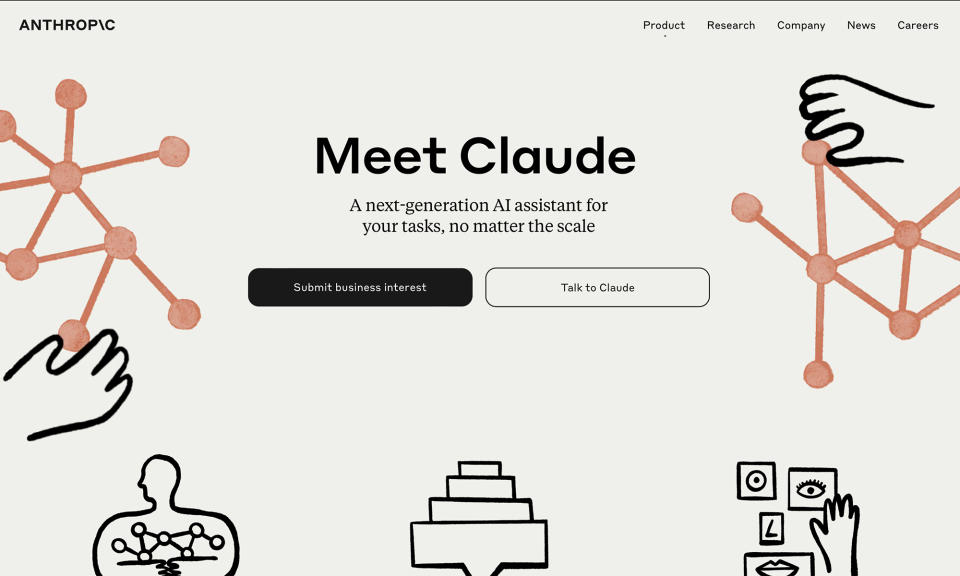
The UK’s competition regulator is probing Alphabet’s investment in AI startup Anthropic. After opening public comments this summer, the Competition and Market Authority (CMA) said on Thursday it has “sufficient information” to begin an initial investigation into whether Alphabet’s reported $2.3 billion investment in the Claude AI chatbot maker harms competition in UK markets.
The CMA breaks its merger probes into two stages: a preliminary scan to determine whether there’s enough evidence to dig deeper and an optional second phase where the government gathers as much evidence as possible. After the second stage, it ultimately decides on a regulatory outcome.
The probe will formally kick off on Friday. By December 19, the CMA will choose whether to move to a phase 2 investigation.
Google told Engadget that Anthropic isn’t locked into its cloud services. “Google is committed to building the most open and innovative AI ecosystem in the world,” a company spokesperson wrote in an email. “Anthropic is free to use multiple cloud providers and does, and we don’t demand exclusive tech rights.” Engadget also reached out to the CMA for comment, and we’ll update this story if we hear back.
TechCrunch notes that Alphabet reportedly invested $300 million in Anthropic in early 2023. Later that year, it was said to back the AI startup with an additional $2 billion. Situations like this can be classified as a “quasi-merger,” where deep-pocketed tech companies essentially take control of emerging startups through strategic investments and hiring founders and technical workers.
Amazon has invested even more in Anthropic: a whopping $4 billion. After an initial public comment period, the CMA declined to investigate that investment last month. The CMA said Amazon avoided Alphabet’s fate at least in part because of its current rules: Anthropic’s UK turnover didn’t exceed £70 million, and the two parties didn’t combine to account for 25 percent or more of the region’s supply (in this case, AI LLMs and chatbots).
Although the CMA hasn’t specified, something in Alphabet’s $2.3 billion Anthropic investment constituted a deeper dive. Of course, Google’s Gemini competes with Claude, and both companies make large language models they provide to small businesses and enterprise customers.
Update, October 25, 2024, 11:10AM ET: This story has been updated to add a quote from a Google representative.
Technology
OpenAI CEO calls GPT-5 Orion report ‘fake news out of control’
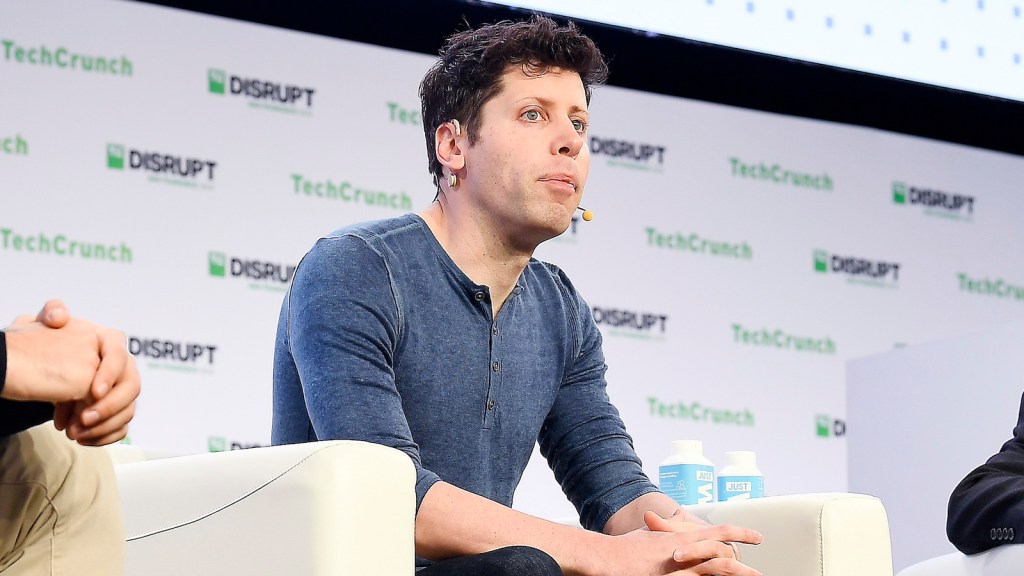
Join our daily and weekly newsletters for the latest updates and exclusive content on industry-leading AI coverage. Learn More
The Verge last night published an exclusive and seemingly well researched and sourced report (it’s great in my opinion, read it here) from journalists Kylie Robison and Tom Warren stating that OpenAI plans to launch another new frontier AI model, codenamed Orion — which may or may not be GPT-5 — by December.
Yet two hours after the article went live, Sam Altman, OpenAI’s co-founder and CEO, took to X to respond by replying directly to Robison’s share of the article, writing “fake news out of control.”
Altman hasn’t elaborated much since then from what I’ve seen, and the response is notably not exactly a direct denial of the claims — he didn’t write “No” or “this is false,” much less describe which part of the detailed article is wrong: is OpenAI not working on a new frontier model called Orion? That would contradict prior reporting from outlets including The Information that it does have such an effort internally — which to my knowledge, OpenAI never directly denied. Is it not planning to release later this year?
But it is clearly an attempt to push back on the reporting as it stands.
It’s an interesting quasi-denial given how precise The Verge report is, noting specific details about Orion’s supposed release plans and the fact that it appears to be geared toward enterprise customers and possibly would be served up through an application programming interface (API) only at first:
“Unlike the release of OpenAI’s last two models, GPT-4o and o1, Orion won’t initially be released widely through ChatGPT. Instead, OpenAI is planning to grant access first to companies it works closely with in order for them to build their own products and features, according to a source familiar with the plan.
Another source tells The Verge that engineers inside Microsoft — OpenAI’s main partner for deploying AI models — are preparing to host Orion on Azure as early as November. While Orion is seen inside OpenAI as the successor to GPT-4, it’s unclear if the company will call it GPT-5 externally.“
OpenAI’s last release of a new frontier model — o1 preview and o1-mini — occurred in early September, a little more than a month ago. Yet the wider reception of these large language models (LLMs) has been largely muted, in part because they are expensive for both the company and developers to operate, and also because they are of a new “reasoning” architecture and are more limited in many ways than OpenAI’s GPT family of models, unable at this time to accept file uploads, or to generate and analyze imagery.
A new frontier model would help OpenAI capture the limelight again from rivals including Anthropic, who just this week unveiled a promising new agentic mode called “Computer Use” and new version of its Claude family of LLMs. OpenAI is not in ppor
Whether OpenAI does end up releasing a new frontier model later this year or not, we’ll be following closely. For now, it seems, fans of the company and its models shouldn’t get their hopes up too soon.
Source link
-

 Science & Environment1 month ago
Science & Environment1 month agoHow to unsnarl a tangle of threads, according to physics
-

 Technology4 weeks ago
Technology4 weeks agoIs sharing your smartphone PIN part of a healthy relationship?
-

 Science & Environment1 month ago
Science & Environment1 month agoHyperelastic gel is one of the stretchiest materials known to science
-

 Science & Environment1 month ago
Science & Environment1 month ago‘Running of the bulls’ festival crowds move like charged particles
-

 Science & Environment1 month ago
Science & Environment1 month agoMaxwell’s demon charges quantum batteries inside of a quantum computer
-

 Technology1 month ago
Technology1 month agoWould-be reality TV contestants ‘not looking real’
-

 Science & Environment1 month ago
Science & Environment1 month agoX-rays reveal half-billion-year-old insect ancestor
-

 Science & Environment1 month ago
Science & Environment1 month agoSunlight-trapping device can generate temperatures over 1000°C
-

 Science & Environment1 month ago
Science & Environment1 month agoLiquid crystals could improve quantum communication devices
-

 Technology4 weeks ago
Technology4 weeks agoUkraine is using AI to manage the removal of Russian landmines
-

 TV3 weeks ago
TV3 weeks agoসারাদেশে দিনব্যাপী বৃষ্টির পূর্বাভাস; সমুদ্রবন্দরে ৩ নম্বর সংকেত | Weather Today | Jamuna TV
-

 Science & Environment1 month ago
Science & Environment1 month agoQuantum ‘supersolid’ matter stirred using magnets
-

 News3 weeks ago
News3 weeks agoMassive blasts in Beirut after renewed Israeli air strikes
-

 Technology3 weeks ago
Technology3 weeks agoSamsung Passkeys will work with Samsung’s smart home devices
-

 Football3 weeks ago
Football3 weeks agoRangers & Celtic ready for first SWPL derby showdown
-

 News3 weeks ago
News3 weeks agoNavigating the News Void: Opportunities for Revitalization
-

 Science & Environment1 month ago
Science & Environment1 month agoLaser helps turn an electron into a coil of mass and charge
-

 Science & Environment1 month ago
Science & Environment1 month agoA new kind of experiment at the Large Hadron Collider could unravel quantum reality
-

 Womens Workouts1 month ago
Womens Workouts1 month ago3 Day Full Body Women’s Dumbbell Only Workout
-

 News3 weeks ago
News3 weeks ago▶ Hamas Spent $1B on Tunnels Instead of Investing in a Future for Gaza’s People
-

 Business3 weeks ago
Business3 weeks agoWhen to tip and when not to tip
-

 MMA3 weeks ago
MMA3 weeks ago‘Uncrowned queen’ Kayla Harrison tastes blood, wants UFC title run
-

 Sport3 weeks ago
Sport3 weeks agoBoxing: World champion Nick Ball set for Liverpool homecoming against Ronny Rios
-

 Science & Environment1 month ago
Science & Environment1 month agoPhysicists have worked out how to melt any material
-

 Science & Environment1 month ago
Science & Environment1 month agoWhy this is a golden age for life to thrive across the universe
-

 Science & Environment1 month ago
Science & Environment1 month agoQuantum forces used to automatically assemble tiny device
-

 Technology4 weeks ago
Technology4 weeks agoMicrophone made of atom-thick graphene could be used in smartphones
-

 MMA3 weeks ago
MMA3 weeks agoPereira vs. Rountree prediction: Champ chases legend status
-

 News3 weeks ago
News3 weeks ago‘Blacks for Trump’ and Pennsylvania progressives play for undecided voters
-

 Sport3 weeks ago
Sport3 weeks agoMan City ask for Premier League season to be DELAYED as Pep Guardiola escalates fixture pile-up row
-

 MMA3 weeks ago
MMA3 weeks agoDana White’s Contender Series 74 recap, analysis, winner grades
-
Business3 weeks ago
DoJ accuses Donald Trump of ‘private criminal effort’ to overturn 2020 election
-

 Sport3 weeks ago
Sport3 weeks agoWales fall to second loss of WXV against Italy
-

 News1 month ago
News1 month ago▶️ Hamas in the West Bank: Rising Support and Deadly Attacks You Might Not Know About
-

 Technology4 weeks ago
Technology4 weeks agoRussia is building ground-based kamikaze robots out of old hoverboards
-

 Science & Environment1 month ago
Science & Environment1 month agoITER: Is the world’s biggest fusion experiment dead after new delay to 2035?
-

 Science & Environment1 month ago
Science & Environment1 month agoA slight curve helps rocks make the biggest splash
-

 Technology1 month ago
Technology1 month agoMeta has a major opportunity to win the AI hardware race
-

 MMA3 weeks ago
MMA3 weeks agoJulianna Peña trashes Raquel Pennington’s behavior as champ
-

 Sport3 weeks ago
Sport3 weeks agoAaron Ramsdale: Southampton goalkeeper left Arsenal for more game time
-

 Technology3 weeks ago
Technology3 weeks agoThis AI video generator can melt, crush, blow up, or turn anything into cake
-

 Technology3 weeks ago
Technology3 weeks agoGmail gets redesigned summary cards with more data & features
-

 Technology3 weeks ago
Technology3 weeks agoMusk faces SEC questions over X takeover
-

 Football3 weeks ago
Football3 weeks agoWhy does Prince William support Aston Villa?
-

 Science & Environment1 month ago
Science & Environment1 month agoNerve fibres in the brain could generate quantum entanglement
-

 Science & Environment1 month ago
Science & Environment1 month agoHow to wrap your mind around the real multiverse
-

 Science & Environment1 month ago
Science & Environment1 month agoNuclear fusion experiment overcomes two key operating hurdles
-

 Science & Environment1 month ago
Science & Environment1 month agoTime travel sci-fi novel is a rip-roaringly good thought experiment
-

 Technology1 month ago
Technology1 month agoWhy Machines Learn: A clever primer makes sense of what makes AI possible
-

 Technology3 weeks ago
Technology3 weeks agoMicrosoft just dropped Drasi, and it could change how we handle big data
-

 Sport3 weeks ago
Sport3 weeks agoSturm Graz: How Austrians ended Red Bull’s title dominance
-

 News3 weeks ago
News3 weeks agoFamily plans to honor hurricane victim using logs from fallen tree that killed him
-

 Sport3 weeks ago
Sport3 weeks agoChina Open: Carlos Alcaraz recovers to beat Jannik Sinner in dramatic final
-

 Money3 weeks ago
Money3 weeks agoWetherspoons issues update on closures – see the full list of five still at risk and 26 gone for good
-

 Technology3 weeks ago
Technology3 weeks agoThe best budget robot vacuums for 2024
-

 News1 month ago
News1 month ago▶️ Media Bias: How They Spin Attack on Hezbollah and Ignore the Reality
-
Business3 weeks ago
Sterling slides after Bailey says BoE could be ‘a bit more aggressive’ on rates
-

 MMA3 weeks ago
MMA3 weeks agoPereira vs. Rountree preview show live stream
-

 MMA3 weeks ago
MMA3 weeks agoKetlen Vieira vs. Kayla Harrison pick, start time, odds: UFC 307
-

 Sport3 weeks ago
Sport3 weeks agoCoco Gauff stages superb comeback to reach China Open final
-

 Entertainment3 weeks ago
Entertainment3 weeks agoNew documentary explores actor Christopher Reeve’s life and legacy
-

 Sport4 weeks ago
Sport4 weeks agoWorld’s sexiest referee Claudia Romani shows off incredible figure in animal print bikini on South Beach
-

 Technology3 weeks ago
Technology3 weeks agoEpic Games CEO Tim Sweeney renews blast at ‘gatekeeper’ platform owners
-
Business3 weeks ago
Bank of England warns of ‘future stress’ from hedge fund bets against US Treasuries
-

 Science & Environment3 weeks ago
Science & Environment3 weeks agoMarkets watch for dangers of further escalation
-

 Business3 weeks ago
Business3 weeks agoChancellor Rachel Reeves says she needs to raise £20bn. How might she do it?
-

 News3 weeks ago
News3 weeks agoWoman who died of cancer ‘was misdiagnosed on phone call with GP’
-

 Technology3 weeks ago
Technology3 weeks agoTexas is suing TikTok for allegedly violating its new child privacy law
-

 Technology3 weeks ago
Technology3 weeks agoOpenAI secured more billions, but there’s still capital left for other startups
-

 Business3 weeks ago
Business3 weeks agoStark difference in UK and Ireland’s budgets
-

 Technology3 weeks ago
Technology3 weeks agoThe best shows on Max (formerly HBO Max) right now
-

 Sport3 weeks ago
Sport3 weeks ago2024 ICC Women’s T20 World Cup: Pakistan beat Sri Lanka
-

 MMA3 weeks ago
MMA3 weeks agoAlex Pereira faces ‘trap game’ vs. Khalil Rountree
-

 Football3 weeks ago
Football3 weeks agoSimo Valakari: New St Johnstone boss says Scotland special in his heart
-

 Technology3 weeks ago
Technology3 weeks agoJ.B. Hunt and UP.Labs launch venture lab to build logistics startups
-

 News3 weeks ago
News3 weeks agoGerman Car Company Declares Bankruptcy – 200 Employees Lose Their Jobs
-

 MMA3 weeks ago
MMA3 weeks agoUFC 307 preview show: Will Alex Pereira’s wild ride continue, or does Khalil Rountree shock the world?
-
Business3 weeks ago
The search for Japan’s ‘lost’ art
-

 MMA3 weeks ago
MMA3 weeks ago‘I was fighting on automatic pilot’ at UFC 306
-
News1 month ago
the pick of new debut fiction
-

 News1 month ago
News1 month agoOur millionaire neighbour blocks us from using public footpath & screams at us in street.. it’s like living in a WARZONE – WordupNews
-

 News3 weeks ago
News3 weeks agoLiverpool secure win over Bologna on a night that shows this format might work
-

 News3 weeks ago
News3 weeks agoHull KR 10-8 Warrington Wolves – Robins reach first Super League Grand Final
-
Business3 weeks ago
Head of UK Competition Appeal Tribunal to step down after rebuke for serious misconduct
-

 News3 weeks ago
News3 weeks agoBalancing India and China Is the Challenge for Sri Lanka’s Dissanayake
-

 News3 weeks ago
News3 weeks agoHeavy strikes shake Beirut as Israel expands Lebanon campaign
-

 TV3 weeks ago
TV3 weeks agoLove Island star sparks feud rumours as one Islander is missing from glam girls’ night
-

 TV3 weeks ago
TV3 weeks agoPhillip Schofield accidentally sets his camp on FIRE after using emergency radio to Channel 5 crew
-

 News3 weeks ago
News3 weeks agoHeartbreaking end to search as body of influencer, 27, found after yacht party shipwreck on ‘Devil’s Throat’ coastline
-
Politics3 weeks ago
Rosie Duffield’s savage departure raises difficult questions for Keir Starmer. He’d be foolish to ignore them | Gaby Hinsliff
-

 Technology3 weeks ago
Technology3 weeks agoPopular financial newsletter claims Roblox enables child sexual abuse
-

 Health & fitness3 weeks ago
Health & fitness3 weeks agoNHS surgeon who couldn’t find his scalpel cut patient’s chest open with the penknife he used to slice up his lunch
-

 Technology3 weeks ago
Technology3 weeks agoApple iPhone 16 Plus vs Samsung Galaxy S24+
-

 TV3 weeks ago
TV3 weeks agoMaayavi (මායාවී) | Episode 23 | 02nd October 2024 | Sirasa TV
-

 Technology3 weeks ago
Technology3 weeks agoHow to disable Google Assistant on your Pixel Watch 3
-

 Money3 weeks ago
Money3 weeks agoPub selling Britain’s ‘CHEAPEST’ pints for just £2.60 – but you’ll have to follow super-strict rules to get in
-

 Technology3 weeks ago
Technology3 weeks agoIf you’ve ever considered smart glasses, this Amazon deal is for you
-

 Technology3 weeks ago
Technology3 weeks agoAmazon’s Ring just doubled the price of its alarm monitoring service for grandfathered customers
-

 News3 weeks ago
News3 weeks agoReach CEO Jim Mullen: If government advertises with us, we’ll employ more reporters
-
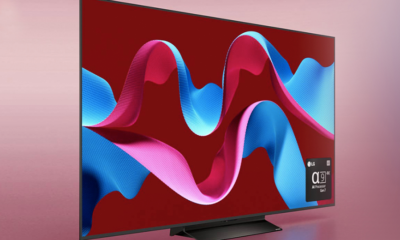
 Technology3 weeks ago
Technology3 weeks agoLG C4 OLED smart TVs hit record-low prices ahead of Prime Day

You must be logged in to post a comment Login